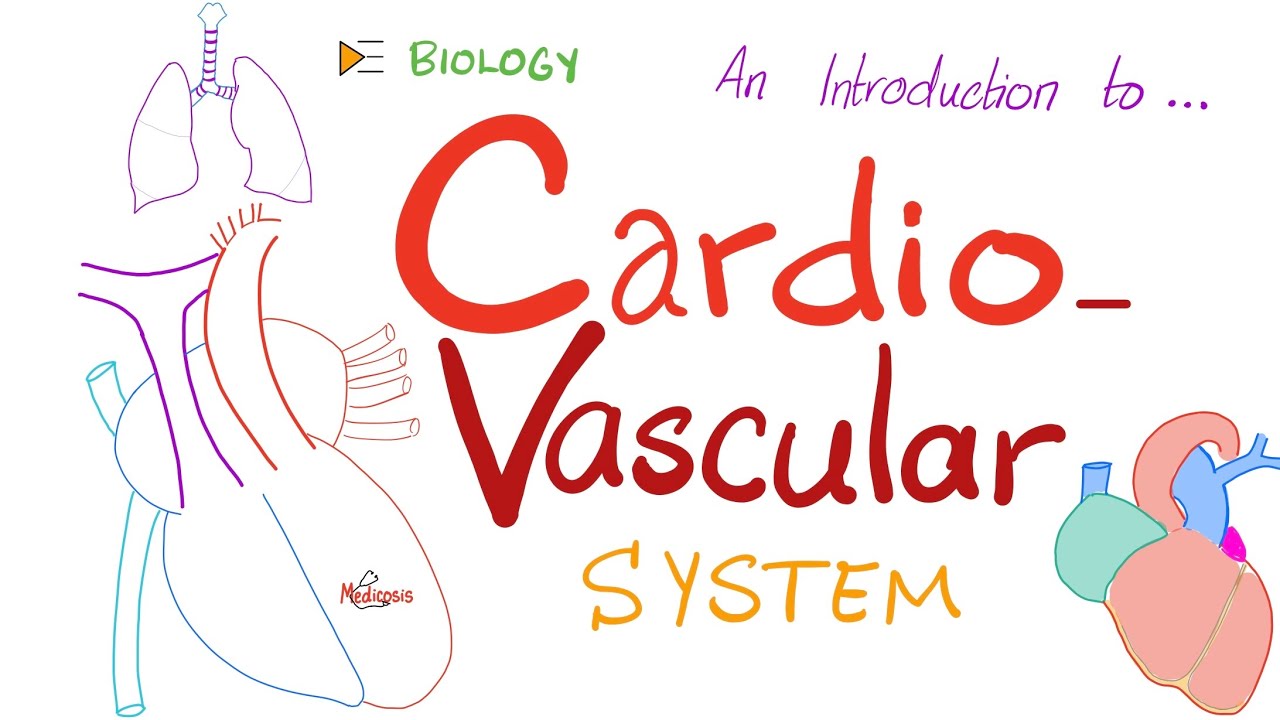The Basics of Hemodynamics (Nursing School Lessons)
Summary
TLDRThis educational video script delves into the fundamentals of hemodynamics, focusing on the pressures and volumes within the heart and cardiovascular system. It explains the significance of the cardiac cycle, including systole and diastole, and how they relate to heart sounds and EKG readings. The script introduces key hemodynamic terms like heart rate, stroke volume, cardiac output, and ejection fraction, and discusses how they interplay to maintain optimal cardiac function. It also touches on the impact of preload, afterload, and contractility on cardiac output, providing a comprehensive foundation for understanding heart health.
Takeaways
- 🩺 Hemodynamics involves measuring pressures and volumes within the heart and cardiovascular system to diagnose issues.
- 🔁 A full cardiac cycle includes both systole (contraction) and diastole (relaxation), with a brief pause in between.
- 📈 Wiggers diagram is a visual tool that illustrates the relationship between heart sounds, EKG, and changes in ventricular volume and pressure.
- 💓 Heart rate (beats per minute), stroke volume (milliliters per beat), and cardiac output (liters per minute) are fundamental hemodynamic parameters.
- 🏋️♂️ Cardiac index adjusts cardiac output for body size, ensuring it's sufficient for the patient's needs.
- 🫀 Ejection fraction represents the percentage of blood pumped out of the left ventricle with each beat, with normal values ranging from 55% to 75%.
- 📉 Preload is the filling pressure within the heart, affecting how much it stretches during diastole.
- 🏋️♀️ Afterload is the force the heart must pump against to eject blood, influencing the opening of heart valves.
- 💪 Contractility refers to the strength of the heart's contractions, crucial for effective blood circulation.
- ⚖️ Hemodynamic factors are interrelated; changes in one parameter may require compensation by others to maintain cardiac output.
Q & A
What are the two main phases of a cardiac cycle?
-The two main phases of a cardiac cycle are diastole, which is the relaxation phase when the ventricles fill with blood, and systole, which is the contraction phase when the atria and ventricles contract to push blood out of the heart.
What is meant by 'atrial kick' in the context of the cardiac cycle?
-The 'atrial kick' refers to the contraction of the atria that occurs just before the ventricles contract. This helps to fill the ventricles completely before they push blood out to the body.
How does a Wiggers diagram help in understanding the cardiac cycle?
-A Wiggers diagram is a visual representation that shows the relationship between various hemodynamic parameters during a cardiac cycle. It includes the phonocardiogram, EKG tracing, and the changes in ventricular volume and pressure, helping to understand the timing and sequence of events in the heart.
What is the normal range for heart rate in beats per minute (bpm)?
-The normal heart rate range is 60 to 100 beats per minute (bpm).
How is stroke volume measured and what is its normal range?
-Stroke volume is measured in milliliters and represents the amount of blood pumped out of the heart with each beat. The normal stroke volume is about 60 to 120 milliliters.
What is cardiac output and how is it calculated?
-Cardiac output is the total volume of blood pumped out of the heart in one minute. It is calculated by multiplying the stroke volume by the heart rate.
Why is cardiac index used, and what is the normal range for it?
-Cardiac index is used to account for a patient's size when assessing cardiac output. It is calculated by dividing the cardiac output by the patient's body surface area. The normal range for cardiac index is about 2.5 to 4.
What is ejection fraction and what is its normal range?
-Ejection fraction is the percentage of blood forced out of the left ventricle with each beat. The normal range for ejection fraction is 55 to 75%.
What are the three factors that affect stroke volume and how do they relate to each other?
-The three factors that affect stroke volume are preload, afterload, and contractility. Preload is the filling pressure of the heart, afterload is the pressure the heart has to pump against, and contractility is the force of the ventricles' contraction. If one factor decreases, the others may have to increase to maintain the same cardiac output.
How can medications like atropine and epinephrine affect a patient's heart rate?
-Atropine, an anticholinergic, and epinephrine, a sympathomimetic, can be used to increase a patient's heart rate if it is too slow.
What is the significance of the pause in the phonocardiogram during the cardiac cycle?
-The pause in the phonocardiogram, known as the diastolic pause, occurs between the S1 and S2 heart sounds. It signifies the period of relaxation and filling of the ventricles before the next contraction.
Outlines

このセクションは有料ユーザー限定です。 アクセスするには、アップグレードをお願いします。
今すぐアップグレードMindmap

このセクションは有料ユーザー限定です。 アクセスするには、アップグレードをお願いします。
今すぐアップグレードKeywords

このセクションは有料ユーザー限定です。 アクセスするには、アップグレードをお願いします。
今すぐアップグレードHighlights

このセクションは有料ユーザー限定です。 アクセスするには、アップグレードをお願いします。
今すぐアップグレードTranscripts

このセクションは有料ユーザー限定です。 アクセスするには、アップグレードをお願いします。
今すぐアップグレード関連動画をさらに表示

The Cardiovascular System (CVS) ❤️ 🩸 - A Simple Introduction - Biology, Anatomy, Physiology

(1/2) Anatomi Struktur Jantung : #1 BASIC CARDIOVASKULAR

Pulse examination physiology

Your Heart on Fish Oil - Many Studies Later.

Rangka Aksial dan Rangka Apendikular - Sistem Rangka - Biologi Kelas XI

Comparative Anatomy of Circulatory System | Zoology | S Chand Academy
5.0 / 5 (0 votes)
